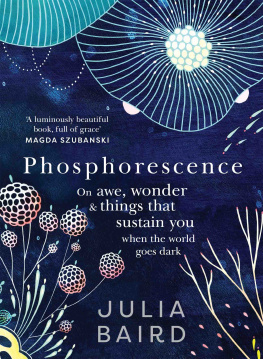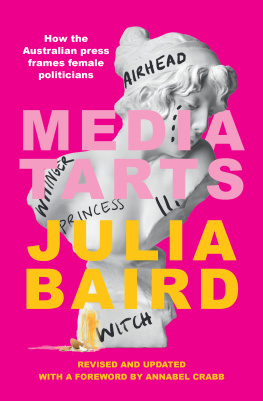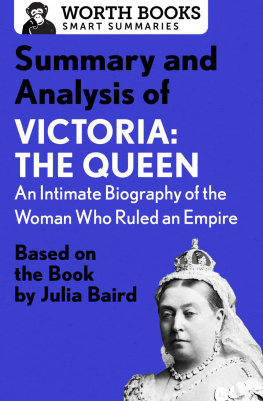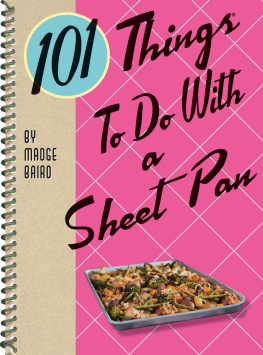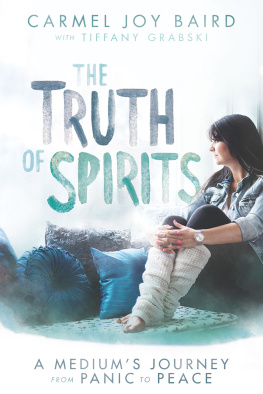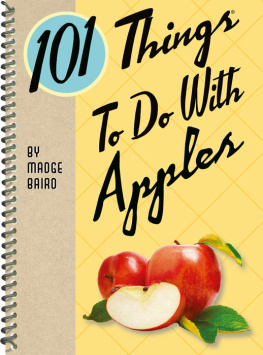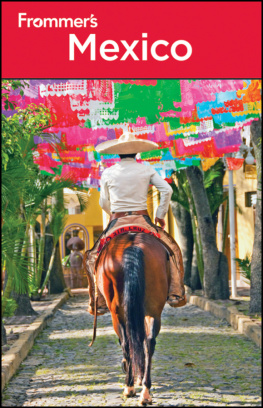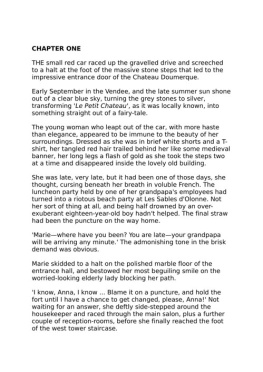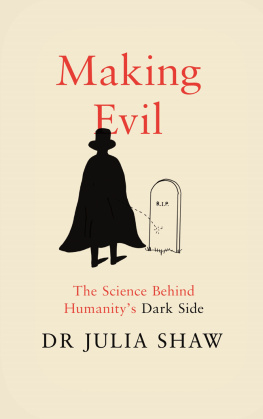Julia Baird - Phosphorescence: On Awe, Wonder and Things That Sustain You When the World Goes Dark
Here you can read online Julia Baird - Phosphorescence: On Awe, Wonder and Things That Sustain You When the World Goes Dark full text of the book (entire story) in english for free. Download pdf and epub, get meaning, cover and reviews about this ebook. year: 2020, publisher: 4th Estate, genre: Non-fiction / History. Description of the work, (preface) as well as reviews are available. Best literature library LitArk.com created for fans of good reading and offers a wide selection of genres:
Romance novel
Science fiction
Adventure
Detective
Science
History
Home and family
Prose
Art
Politics
Computer
Non-fiction
Religion
Business
Children
Humor
Choose a favorite category and find really read worthwhile books. Enjoy immersion in the world of imagination, feel the emotions of the characters or learn something new for yourself, make an fascinating discovery.
- Book:Phosphorescence: On Awe, Wonder and Things That Sustain You When the World Goes Dark
- Author:
- Publisher:4th Estate
- Genre:
- Year:2020
- Rating:3 / 5
- Favourites:Add to favourites
- Your mark:
- 60
- 1
- 2
- 3
- 4
- 5
Phosphorescence: On Awe, Wonder and Things That Sustain You When the World Goes Dark: summary, description and annotation
We offer to read an annotation, description, summary or preface (depends on what the author of the book "Phosphorescence: On Awe, Wonder and Things That Sustain You When the World Goes Dark" wrote himself). If you haven't found the necessary information about the book — write in the comments, we will try to find it.
Julia Baird: author's other books
Who wrote Phosphorescence: On Awe, Wonder and Things That Sustain You When the World Goes Dark? Find out the surname, the name of the author of the book and a list of all author's works by series.
Phosphorescence: On Awe, Wonder and Things That Sustain You When the World Goes Dark — read online for free the complete book (whole text) full work
Below is the text of the book, divided by pages. System saving the place of the last page read, allows you to conveniently read the book "Phosphorescence: On Awe, Wonder and Things That Sustain You When the World Goes Dark" online for free, without having to search again every time where you left off. Put a bookmark, and you can go to the page where you finished reading at any time.
Font size:
Interval:
Bookmark:


JULIA BAIRD is a globally renowned author and award-winning journalist. She hosts The Drum on ABC TV and writes columns for The New York Times and The Sydney Morning Herald. Her first book, Media Tarts, was based on her history PhD about the portrayal of female politicians. After moving to the United States to take up a fellowship at the Harvard Kennedy School, she became a columnist and senior editor at Newsweek in New York. Julias biography of Queen Victoria was published in several countries to critical acclaim and was one of The New York Times top ten books of 2016. She lives near the sea with two children, a tyrannical cat and an abnormally large dog.
Julia Bairds exquisitely wrought and meticulously researched biography brushes the dusty myth off this extraordinary monarch... The book thrums with authority. The New York Times Book Review
Baird nails Victoria, with sympathy but not uncritically. There can be no higher praise. The Sydney Morning Herald
Monumental... [An] important and at times enthralling study. Australian Book Review
It... will forever change the way you see the world, and in particular the role of women who live in it. Caroline Overington, The Australian
A triumph. Genuinely fresh insights into one of historys most intriguing figures, impeccably researched and beautifully written. Leigh Sales, ABC TV anchor
Its Bairds gift as a storyteller, her knack for human detail and the idiosyncrasies of the era, that make this book so superb... An extraordinary story, told with brilliance and tenderness by one of Australias most perceptive writers. Annabel Crabb
A thoroughly contemporary biography... Baird brings the figure of Victoria richly to life, with all her contradictions... Lively, intelligent. Books+Publishing
A stunning achievement... a remarkably lucid, endlessly engaging account of Queen Victorias life and rule. Amanda Foreman, author of the bestselling Georgiana, Duchess of Devonshire and the chair of the judging panel for the 2016 Man Booker Prize
Frisky, adventurous... exhilarating. Janet Maslin, The New York Times

To my luminous children,
Poppy and Sam,
and my mother, Judy,
the lamp who has lit our family.
And to Jock,
who, herself, is
incandescence in the dark.
Phosphorescence. Now theres a word to lift your hat to... to find that phosphorescence, that light within, thats the genius behind poetry...
Emily Dickinson
Contents
THERE ARE FEW THINGS as startling as encountering an unearthly glow in the wild. Glow-worms. Ghost mushrooms. Fireflies. Flashlight fish. Lantern sharks. Vampire squid. Our forest floors and ceilings, our ocean depths and fringes are full of luminous beings, creatures lit from the inside. And they have, for many centuries, enchanted us, like glowing missionaries of wonder, emissaries of awe.
Is there anything more beautiful than living light?
Before science explained the phenomenon in its various forms, it was the stuff of myth and legend. Aristotle puzzled over damp wood that glowed in the dark. The Japanese imagined fireflies to be the souls of the dead, or, more specifically, of samurai killed in battle. Sailors aboard ships gliding through luminescent blooms thought the seas were on fire; they spoke of burning seas, milky oceans or smouldering coals on the water; Aristotle referred to exhalations of fire from the sea. In 1637, French philosopher Ren Descartes saw seawater generate sparks rather similar to those which are emitted by pieces of flint when they are struck. In 1688, French Jesuit missionary Pre Guy Tachard declared the sparks were a consequence of the sun impregnating the sea by day with an infinity of fiery and luminous spirits, and these spirits uniting after dark to pass out in a violent state. Some observers, watching light-trails spinning out from bows in the Indian Ocean, called them The Wheels of Poseidon.
For me, today, these lights are the perfect metaphor for flashes of life in the middle of the dark, or joy in difficult times. But in centuries past, they were sheer magic. Charles Darwin was awestruck when he saw, while sailing through the Rio de la Plata in the South Atlantic in 1845, a sea that presented a wonderful and most beautiful spectacle... The vessel drove before her bows two billows of liquid phosphorous, and in her wake she was followed by a milky train. As far as the eye reached the crest of every wave was bright, and the sky above the horizon, from the reflected glare of the livid flames, was not so utterly obscure as over the vault of the heavens.
No one attempted to seriously understand these mysterious occurrences until after World War I. During the conflict, tiny natural lights in the sea inadvertently aided war efforts by illuminating submarines: in November 1918, British naval officers sailing off the coast of Spain spied a large outline beneath them glowing and outlined by sea fire, and attacked. This was the last German U-boat submarine to be destroyed in the war.
During World War II, the Japanese devised a clever way of illuminating maps with a light so faint that it would not alert enemies to their presence. Their army harvested vast piles of crustaceans called umihotaru or ostracods also known as sea fireflies from the waters surrounding their country, and distributed them to their fighting units. The soldiers then only needed to hold these dried plankton in their hands, trickle liquid onto them and crush them to obtain light. Scientist Osamu Shimomura said: It was an easy, simple source of light. You just add water. Very convenient. You dont need any batteries. More than fifty years later, Shimomura who won a Nobel prize in 2008 for his work on green fluorescent protein in jellyfish was able to produce the same effect for a colleague in a darkened room, clenching his fist then opening it to reveal a cool blue light.
By this time, both America and Russia had begun to study luminous creatures in earnest. In the 1960s, the US Naval Oceanographic Office published a seminal study, relying on centuries of shipping records and journals in which naval officers struggled to describe what they saw. You can hear the gasp and wonder in their words, the fumbling for language adequate to describe the scenes. The lights were said to be like a mass of boiling turquoise foam, a luminous serpent, a welding torch, the illuminated dial of a wrist-watch, magnesium burning. One witness reported being able to read on deck at night, due to the bright white light of the sea, like that from molten iron.
Stories of these sightings had circled the globe for as long as ships had done the same: spark-type displays in the Gulf of Maine in summer; green fire strong enough to enter the portholes of a ship in Chesapeake Bay and reflect from the ceiling of a stateroom; red tides off the coast of Florida and Texas that turned luminescent at night; glowing waters in the Canary Islands; sea like a star spangled sky in the western Mediterranean basin; flashes of light in broken ice off the west coast of Norway; sparkling emerald dots in the Orkney Islands; glowing balls in the Thames; green oar-strokes in the Irish Sea. In False Bay, off Cape Town, South Africa, what seemed a greasy froth by day was a lake of molten gold at night. When a tsunami receded at night near Sanriku, on the island of Honshu in Japan, The exposed bottom was strongly luminescent with a bluish white light of such strength that land objects were visible as in daylight.
Font size:
Interval:
Bookmark:
Similar books «Phosphorescence: On Awe, Wonder and Things That Sustain You When the World Goes Dark»
Look at similar books to Phosphorescence: On Awe, Wonder and Things That Sustain You When the World Goes Dark. We have selected literature similar in name and meaning in the hope of providing readers with more options to find new, interesting, not yet read works.
Discussion, reviews of the book Phosphorescence: On Awe, Wonder and Things That Sustain You When the World Goes Dark and just readers' own opinions. Leave your comments, write what you think about the work, its meaning or the main characters. Specify what exactly you liked and what you didn't like, and why you think so.

